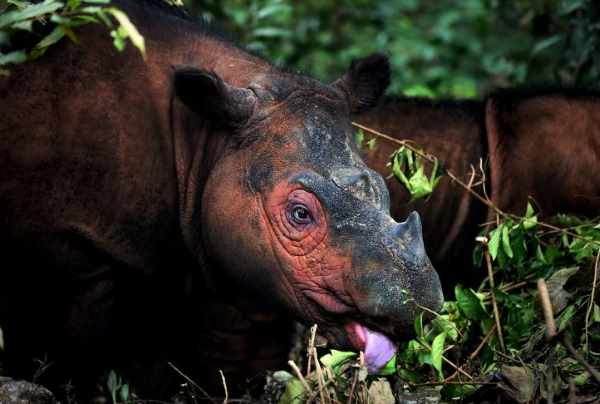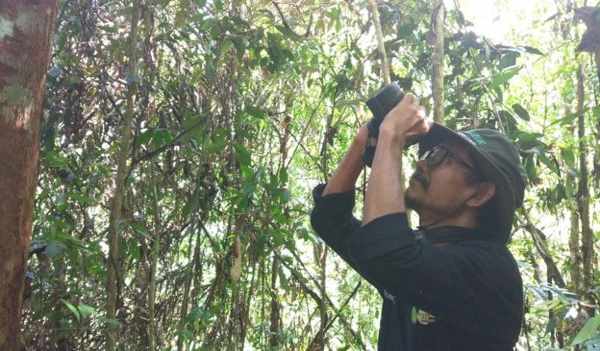Occupying only 1.3% of the world’s land surface, Indonesia is one of the world’s wealthiest nations regarding its biodiversity. Similarly, Aceh is also one of the enriched biodiversity province not only Sumatra but also Indonesia. Aceh province still has relatively entire remaining forest areas, the bulk of which lie within the Leuser Ecosystem, a 2.6 million hectare area of forest which dominates the core inland and upland areas of Aceh. Scientists and conservationists consider the Leuser Ecosystem to be among the most critical woods left in Southeast Asia, mainly because it is the last place of sufficient size and quality to support viable populations of rare species like Sumatran tigers, orangutans, rhinos, elephants, clouded leopards and sun bears. At least 105 mammal species, 382 bird species, and 95 reptile and amphibian species, including clouded leopards, hornbills and the enormous flowers in the world, can be found in the teeming forests of the Leuser Ecosystem. Formerly known as the “Emerald Island,” Sumatra’s once lush forest landscapes are now mostly gone, destroyed by decades of industrial encroachment. The Leuser Ecosystem is genuinely the last stand for survival for many treasured and iconic wildlife species. These ecosystem services are also recognized as essential for sustaining food and water security, by regulating water flows in both the monsoon and drought seasons, to irrigate rice fields and other cash crops, such as palm oil.
However, Tiger, symbol of the beast and beauty, is a threatened species worldwide. Recent estimate shows that tigers only occupy 7% of their historic Asian range and about 4000 are left in the wild (Dinerstein et al. 2007). Tiger stands at the top of the food pyramid and thus requires large areas to support its viable populations which in turn help to protect wide array of biodiversity that shares their habitat. Loss of tiger, therefore, may reduce ecosystem integrity through disrupting food web and consequently erode ecosystems’ natural ability to adapt to changing environmental conditions. Similarly, the Sumatran tiger (Panthera tigris sumatrae) is a tiger population that lives on the Indonesian island of Sumatra. It was listed as Critically Endangered on the IUCN Red List in 2008, as the population was estimated at 441 to 679 individuals, with no subpopulation larger than 50 individuals and a declining trend.
The Sumatran tiger is the only surviving population of the Sund Island’ group of tigers that included the now extinct Bali and Javan tigers. Sequences from complete mitochondrial genes of 34 tigers support the hypothesis that Sumatran tigers are diagnostically distinct from mainland subspecies. The Sumatran tiger is one of the smallest tigers, and about the size of big leopards and jaguars. Charles Frederick Partington, a scientist, wrote that Sumatran and Javan tigers were strong enough to break legs of horses or buffaloes with their paws, even though they were not as heavy as Bengal tigers. Sumatran tiger’s skull, pelage, and striping features are distinct from the Bengal and Javan tigers. It is darker in fur color and has broader stripes than the Javan tiger. Strips tend to dissolve into spots near their ends, and on the back, flanks and hind legs are lines of small, dark, small spots between regular stripes. The frequency of strips is higher than in other subspecies. Males have a prominent ruff, which is primarily marked in the Sumatran tiger.
Tigers need large contiguous forest blocks to thrive. Sumatran tigers strongly prefer uncultivated forest and make little use of plantations of acacia and oil palm even if these are available. Within natural forest areas, they tend to use areas with higher elevation, lower annual rainfall, farther from forest edge, and closer to forest centers. They prefer forest with dense understory cover and steep slope, and they actively avoid forest areas with high human influence in the forms of encroachment and settlement. Major threats include habitat loss of tiger due to expansion of palm oil plantations and planting of acacia plantations, prey-base depletion, and illegal trade primarily for the domestic market.
 Moreover, Sumatran tigers persist in isolated populations across Sumatra. They occupy a wide array of habitats, ranging from sea level in the coastal lowland forest of Bukit Barisan Selatan National Park on the southeastern tip of Lampung Province to 3,200 m (10,500 ft) in mountain forests of Gunung Leuser National Park in Aceh Province. They have repeatedly been photographed at 2,600 m (8,500 ft) in a rugged region of northern Sumatra, and are present in 27 habitat patches larger than 250 km2 (97 sq mi). In 1978, the Sumatran tiger population was estimated at 1,000 individuals based on responses to a questionnaire survey. In 1985, a total of 26 protected areas across Sumatra containing about 800 tigers were identified. In 1992, an estimated 400–500 tigers lived in five national parks and two protected areas.
Moreover, Sumatran tigers persist in isolated populations across Sumatra. They occupy a wide array of habitats, ranging from sea level in the coastal lowland forest of Bukit Barisan Selatan National Park on the southeastern tip of Lampung Province to 3,200 m (10,500 ft) in mountain forests of Gunung Leuser National Park in Aceh Province. They have repeatedly been photographed at 2,600 m (8,500 ft) in a rugged region of northern Sumatra, and are present in 27 habitat patches larger than 250 km2 (97 sq mi). In 1978, the Sumatran tiger population was estimated at 1,000 individuals based on responses to a questionnaire survey. In 1985, a total of 26 protected areas across Sumatra containing about 800 tigers were identified. In 1992, an estimated 400–500 tigers lived in five national parks and two protected areas.
The presence of tigers in the forest is an indicator of the well being of the ecosystem. The extinction of this top predator is an indication that its ecosystem is not sufficiently protected, and neither would it exist for long after that. Healthy tiger habitats help mitigate climate change, provide fresh water to animals and people, reduce the impact of natural disasters, and improve the health of local people. Therefore, Sumatra tiger not only protects our ecological balance but also it protects Leuser Ecosystem as well other Sumatra forest from illegal cutting of trees, other wildlife, and living organism. Lastly, it has been said that to preserve our biodiversity conserve tiger from all possible threats and make our earth sound. []
Writer is a Bangladesh student who join Darmasiswa program at at Syiah Kuala University





